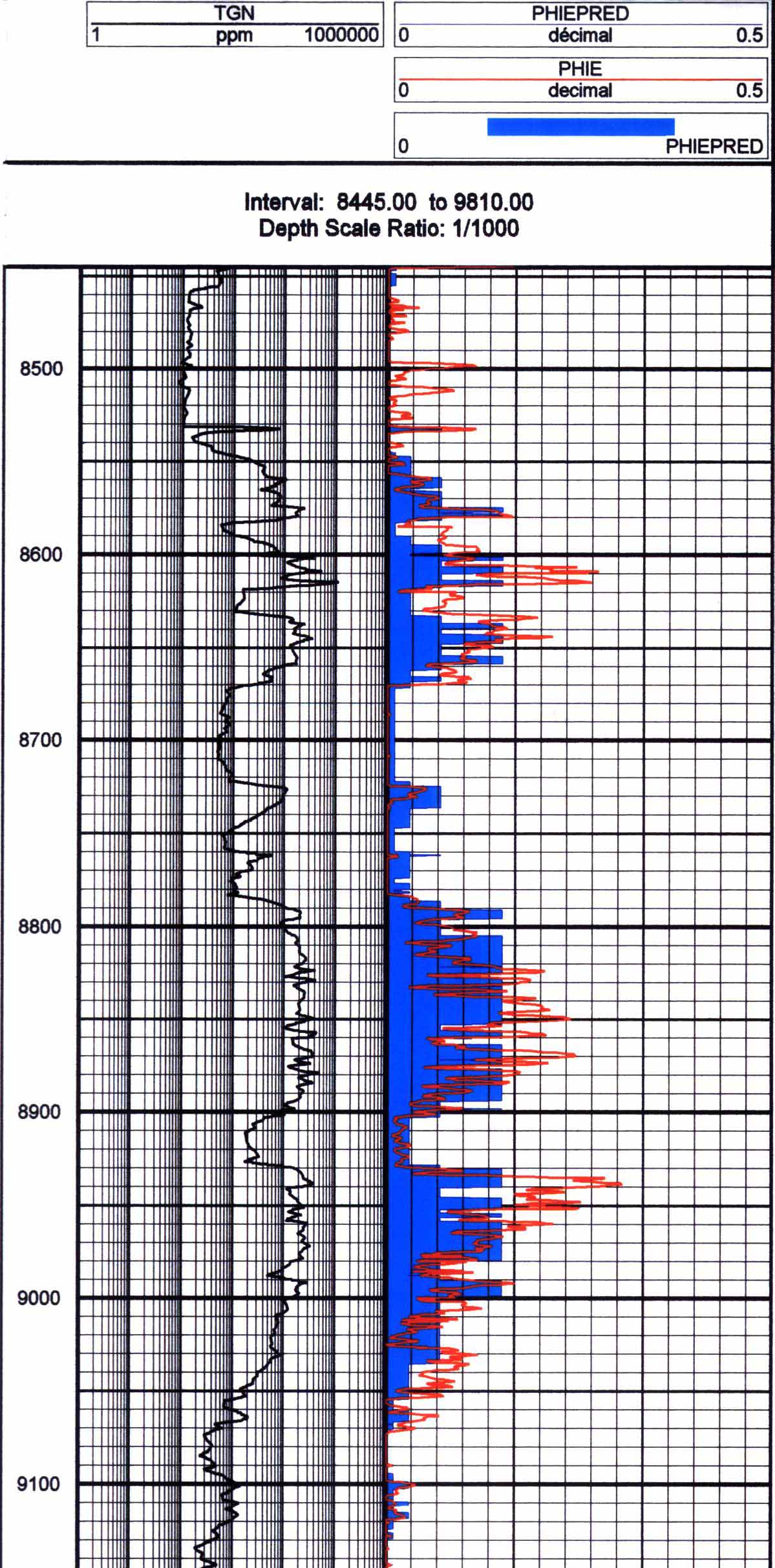At present, the only way to obtain information on rock properties, such as porosity, hydrocarbon nature of fluid, is to realise a heavy logging operation in combination with pressure and sampling testing or to conduct a continuous coring programme with subsequent lab analysis. Interpretation of electric logs provides a calculated porosity, which ideally should be calibrated against core data.
TOTAL plans to realise a study of which the final objective is to reduce logging operations, and pressure and sampling testing. Mudlogging gas data contain information on porosity and hydrocarbons. The premise of the utilisation of mudlogging gas data is an interpretative and/or prediction tool is that the surface gas measurement is representative for the in-situ gas composition.
Mudlogging alone will never replace electric logging services, but any alternative information on fluid type and porosity can be of help to tune the logging and testing programmes.
The following log is an example of porosity prediction of a test well and confirms the validity of the method.The procedure of porosity prediction yields interesting information about porosity of the rock formation.
- The black curve is the TG (total gas).
- The red curve is calculated porosity from logging data.
- The blue curve is predicted porosity from mudlogging gas data.
